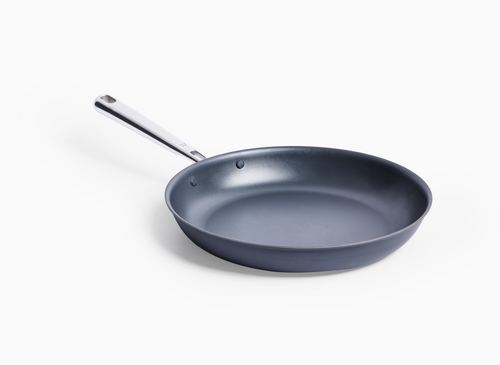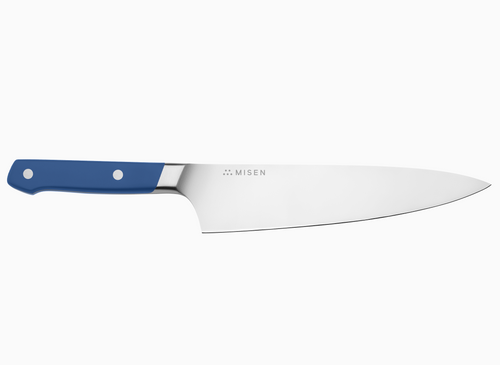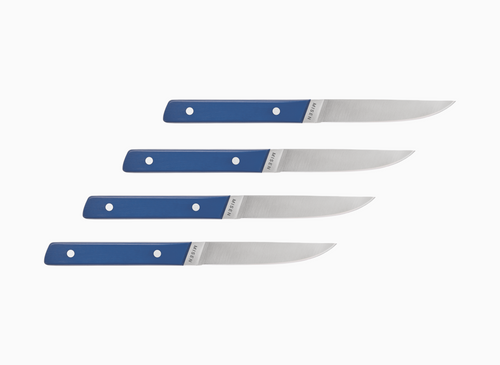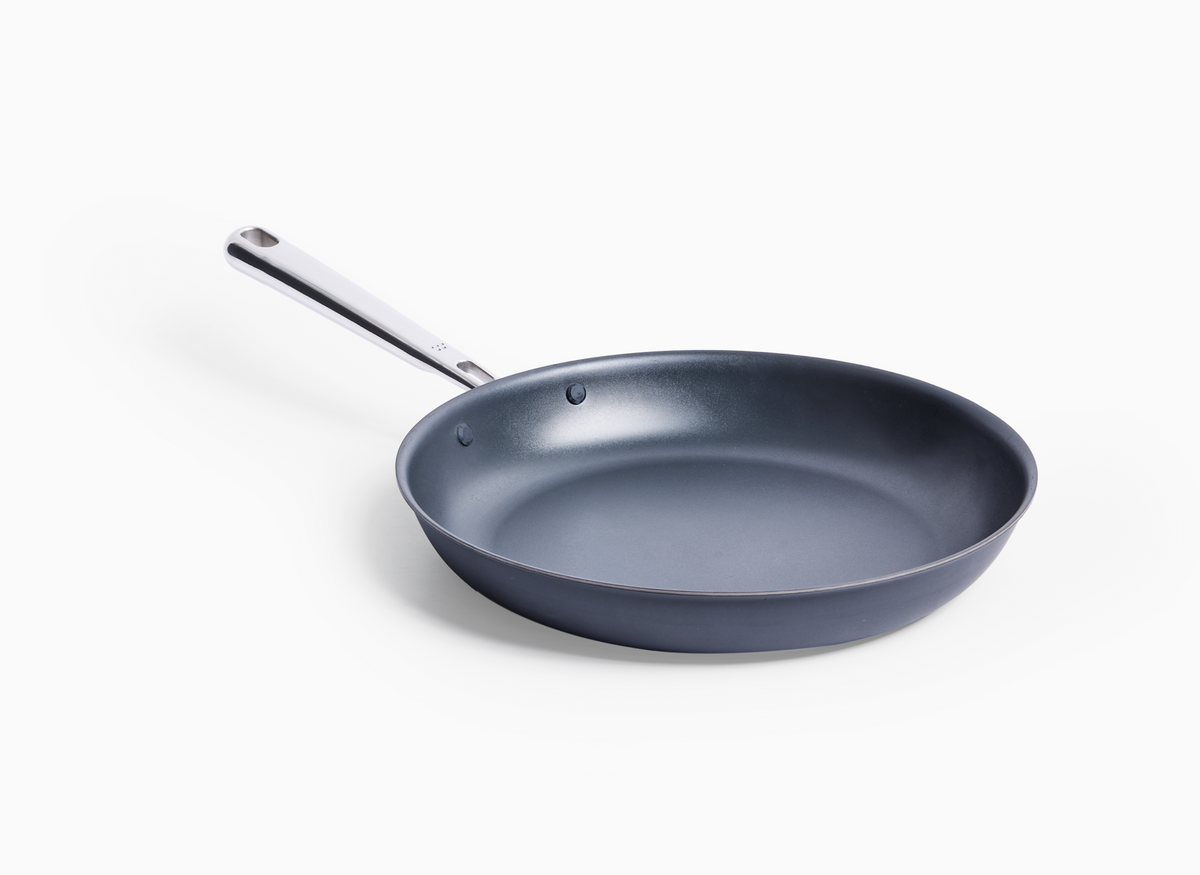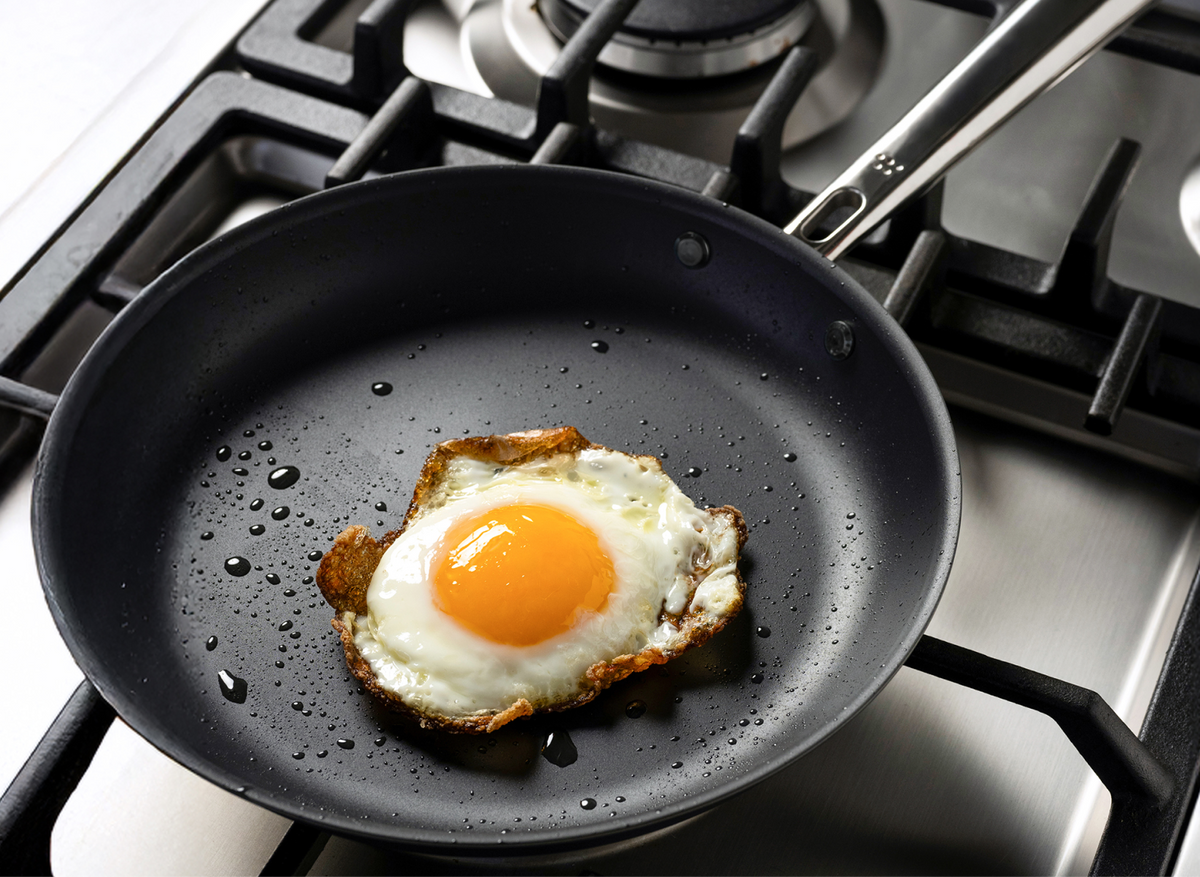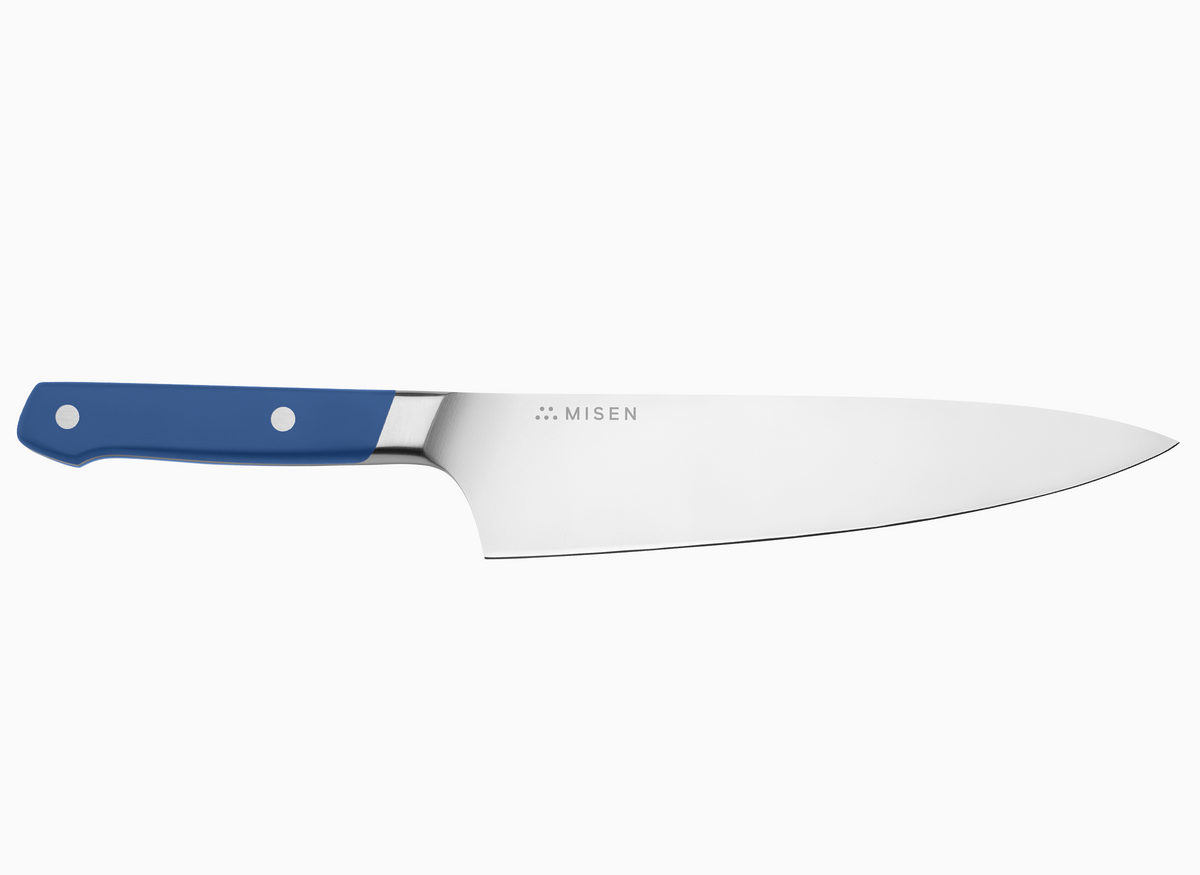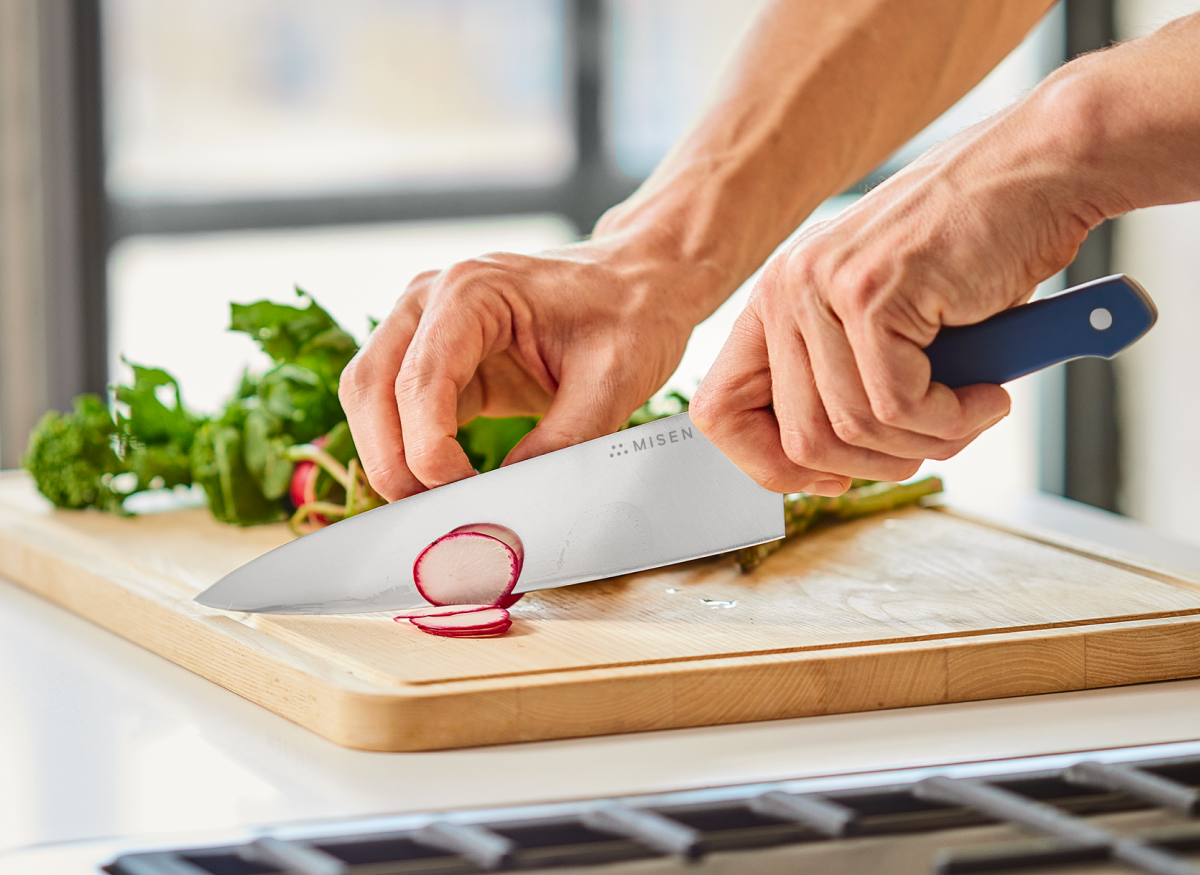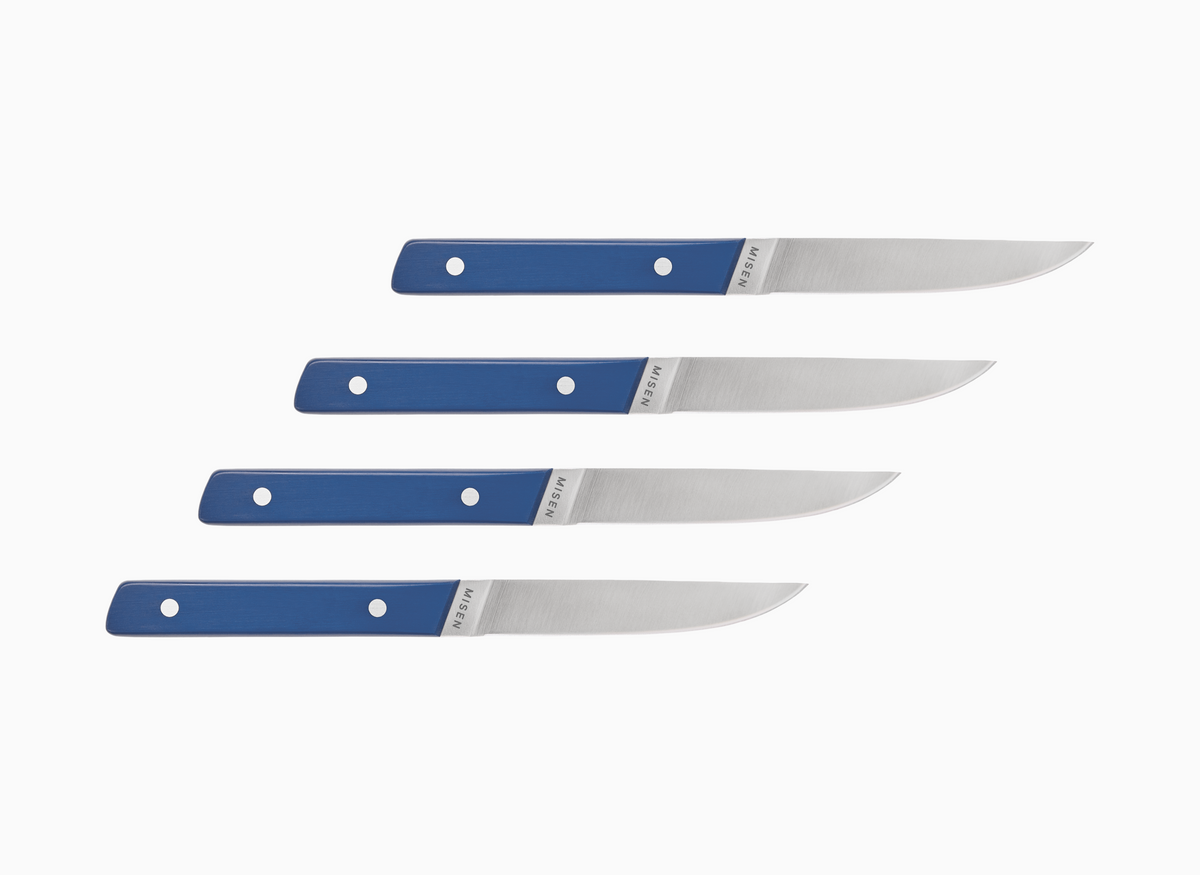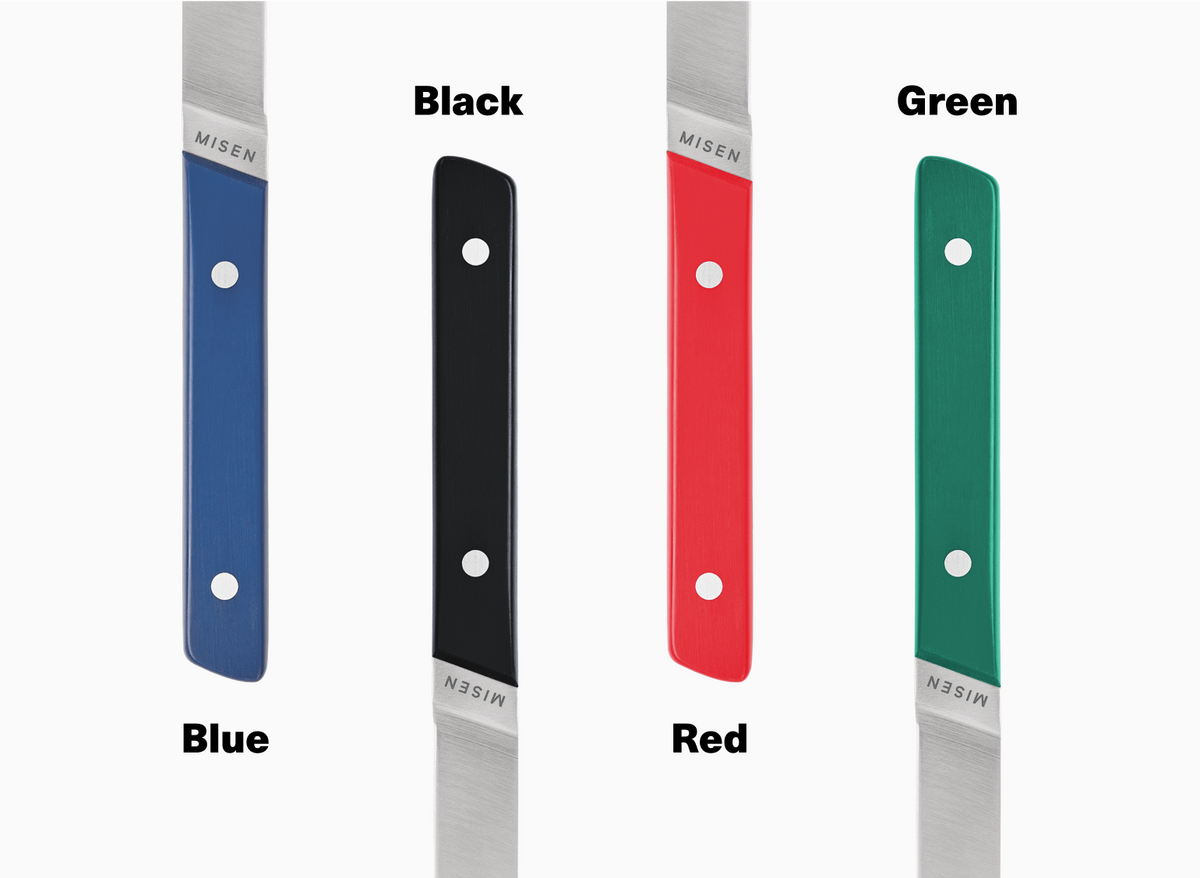5 Essential Uses of a Chef Spoon in Professional Cooking

Stirring and Mixing with Precision
The chef spoon's wide bowl and balanced design make it superior to whisks for creating smooth, consistent sauces without splashing or aggressive mixing.
Why a chef spoon beats a whisk for sauces
A chef spoon's wide bowl and balanced design make it the go-to tool for smooth, consistent sauces. Unlike whisks that splash and create unnecessary mess, the spoon's offset handle and generous bowl give you total control while keeping your hands safely away from heat [1]. The perfectly proportioned handle offers better leverage than traditional serving spoons when you're working with bubbling sauces or reductions [1]. The smooth, solid bowl lets you incorporate ingredients evenly without the aggressive action of a whisk - perfect for delicate emulsions that need gentle handling. Plus, you won't worry about scratching your cookware like you might with metal whisks [2].
Technique for even incorporation
Here's the secret to lump-free sauces: the figure-8 motion. Start at your pan's edge, sweep across the bottom, up the opposite side, and back through center. Keep this movement fluid and continuous - you'll have silky-smooth results in under a minute [3]. For thicker mixtures like polenta or risotto, switch to gentle scraping motions while keeping contact with the pan bottom. This prevents sticking without overworking your ingredients [3]. When you're folding delicate batters, try the "down, across, up" technique: go straight down through the center, sweep across the bottom, then lift and fold. Stop after 10-12 passes to keep things light and airy [3]. Your spoon's shape matters too - a gentle curve helps ingredients flow smoothly and prevents lumps, while deeper bowls let you move more volume with each stir, cutting your mixing time significantly [3].
Choosing the right material for high‑heat stirring
Your spoon material can make or break your cooking experience. Stainless steel stands up to daily use and high heat - it's the workhorse that handles everything from quick sautés to long-simmering stocks [4]. If you're working with quality cookware like stainless steel pans, a stainless spoon is your perfect partner. For those special nonstick pieces, reach for silicone or nylon options that protect your investment while handling the heat [4]. Don't overlook wooden spoons either - they're champions for high-heat tasks like making caramel or dark roux. Wood stays cool in your hand and treats your pans gently, no matter how vigorously you stir [5]. The key is matching your tool to your task and cookware [6].
Tasting and Seasoning on the Fly
Professional chefs taste with precision using tiny portions that capture every element of the dish, mentally checking salt, spice, texture, and doneness.
Using the spoon as a tasting tool
Tasting with a chef spoon isn't like regular eating - it's a precise skill that separates good cooks from great ones. When you taste, take tiny portions that capture every element of your dish. Think lasagna: your spoon should grab a bit of each layer to get the full picture [7]. Let that small bite rest on your tongue while you mentally check off key points: Is the salt right? Too spicy? How's the texture? Is everything cooked through? [7] Here's a crucial rule: never double-dip your tasting spoon or sample from a plate that's heading to the table. Always taste during prep to keep things safe and your plating pristine [7]. The pros can taste all shift long and eat less than a single meal - that's how efficient this technique really is [7].
How to balance flavors quickly
Balancing flavors comes down to understanding how sweet, salty, sour, bitter, and umami work together. Your chef spoon becomes your precision tool for this delicate dance. Before adding anything, taste and identify which elements need adjusting - this simple step prevents the dreaded over-seasoning disaster [8]. The spoon's design gives you exact control over each addition. Need to tame something bitter? Add a hint of sweetness. Too rich? A splash of acid will cut right through [9]. Forget rigid recipes - the best cooks taste constantly throughout cooking, catching those subtle imbalances before they become problems [10]. This ongoing taste-and-adjust approach, made easy with your spoon's precise control, is what creates that restaurant-quality balance you're after [8].
Maintaining consistency across batches
Making larger batches isn't just multiplying your recipe - it's understanding how flavors behave at scale. For smooth sauces and soups, here's a pro tip: mix your seasonings and thickeners with a small amount of liquid first, then fold that mixture into your big pot. This simple step prevents those annoying lumps and ensures everything blends evenly [11]. Keep in mind that not everything scales up equally. Cooking 20 chicken pieces? You won't need 10 times the oil you'd use for two pieces - the proportions shift [11]. Build your flavors in layers instead of dumping everything in at once. Start with your base seasoning, then add more as you cook [12]. This layering technique does two things: it helps flavors penetrate better in large batches and gives you multiple chances to taste and adjust along the way [12].
Sauce Basting and Glazing
Basting with a chef spoon builds flavor layers and ensures even heat distribution by cooking proteins from multiple angles simultaneously.
Basting meats and vegetables efficiently
Basting adds incredible flavor to your cooking, and a chef spoon makes the process simple and controlled. When you tilt your pan slightly to gather liquid in one corner, the spoon lets you scoop and pour evenly over your protein without splashing [13]. Here's what many home cooks don't realize: basting isn't about keeping meat moist - it's about creating even heat distribution and building layers of flavor [14].
Start with oil for high-heat searing, then switch to butter for finishing (butter burns at high temps, so timing matters) [14]. The real magic happens when you baste pan-seared proteins - you're essentially cooking from multiple angles at once, using the hot fat to speed up cooking while developing that restaurant-quality crust [14]. Whether you're working with a stainless steel pan or carbon steel, the chef spoon gives you the control you need for perfect results.
Glazing sauces without splatter
Getting that perfect sauce glaze doesn't require chef school - just the right technique with your spoon. Place a spoonful of sauce on the plate, then use the back of the spoon to spread it smoothly. Want thicker lines? Press harder. Going for delicate drizzles? Lighten up on the pressure [15].
Here's a pro tip that makes all the difference: warm your plates to about 150°F before plating. This keeps your sauces fluid and glossy instead of stiffening up mid-swipe [16]. The key is confidence - make smooth, deliberate motions without hesitating. Think of it like painting: steady pressure, fluid movement, and your sauce stays exactly where you want it [16].
Preventing scratches on nonstick cookware
Let's talk about protecting your cookware investment. As we covered in the stirring section, wooden and silicone spoons are your nonstick pan's best friends. While you might see TV chefs using metal on nonstick, remember they're not paying for replacements [17].
For home cooking, stick to heat-resistant silicone or wood when working with nonstick surfaces. Even tiny scratches can damage the coating and affect your cooking [17]. Many home cooks are discovering what restaurants have known for years: a well-seasoned carbon steel pan can deliver natural nonstick performance without the worry of damaging delicate coatings. When you do use nonstick, hand-wash gently - no scrubbing pads needed [17].
Deglazing and Fond Extraction
The chef spoon's flat edge captures every bit of fond - those golden-brown flavor bombs that transform simple pan drippings into restaurant-quality sauces.
Scraping browned bits for depth
Your chef spoon's flat edge is perfect for scraping up fond - those golden-brown bits stuck to the pan after searing. Think of them as flavor gold rather than stuck-on mess. These caramelized pieces pack concentrated taste from the browning process, forming the foundation for restaurant-quality pan sauces [18].
The spoon's wide, flat edge gives you more surface contact than other tools, helping you capture every bit of flavor while keeping control over the process [19]. Its design lets you scrape firmly without worrying about damaging your cookware - especially important when working with quality stainless steel pans that develop the best fond [18].
Step‑by‑step deglaze method
Here's how to turn those browned bits into liquid gold. After removing your cooked protein or veggies, pour off excess fat from the pan, then add just enough liquid to cover the bottom by about ¼ inch - wine, stock, or even water works [18].
Keep the heat at medium-high and let the liquid come to a boil. Now's when your chef spoon really shines - scrape vigorously to release all those flavorful bits [20]. Keep stirring as the liquid reduces and becomes syrupy. If you're using wine, you'll know it's ready when that sharp alcohol smell transforms into something sweet and mellow [20].
The key is letting the liquid reduce enough to concentrate flavors without evaporating completely - you're building a sauce base, not making pan candy [21]. As mentioned in the previous section, this technique requires the right cookware that allows fond to develop properly.
Integrating the spoon into pan‑based sauces
Now that you've captured all that flavor, your chef spoon becomes the perfect tool for turning it into a silky sauce. Once the fond dissolves, use gentle stirring motions to reduce the sauce while keeping the heat consistent - this prevents scorching and ensures even cooking [22].
Here's a pro tip: before deglazing, pour off excess fat but leave about 1-2 teaspoons behind. This small amount helps create a smooth, emulsified sauce [23]. As you stir, the spoon's flat edge catches any stubborn fond bits, incorporating every last drop of flavor.
For a restaurant-worthy finish, gradually swirl in cold butter or a splash of cream using your spoon - this creates that glossy, velvety texture that makes pan sauces irresistible [23]. Want ultra-smooth results? Strain the finished sauce through a fine sieve, using the back of your spoon to press through all the goodness [23].
Portion Control and Plating
A chef spoon's standardized bowl size ensures consistent portioning across multiple servings, making it essential for professional kitchens' food cost control.
Serving soups and stews with accuracy
A chef spoon's standardized bowl size makes it an essential tool for portion control in professional kitchens. Unlike traditional ladles that vary in capacity, chef spoons typically hold consistent volumes, helping maintain uniform servings across multiple orders. For soups and stews, the spoon's deep bowl captures both liquid and solid components in proper ratios - essential when serving dishes like minestrone or beef stew where ingredient distribution matters. Professional kitchens rely on this consistency to control food costs and ensure every guest receives the same experience. When portioning, fill the spoon level with the bowl's rim for accuracy, then use the curved edge to cleanly release contents without drips. The offset handle design provides leverage for scooping from deep pots while maintaining control over each serving.
Creating decorative swirls for plating
A chef spoon transforms simple sauces into artful presentations through its unique design features. The curved back creates natural flow patterns - for elegant swirls, place sauce on the plate and draw the spoon through it with confident, continuous motion. Master the "comma" technique by pressing the bowl's tip into sauce and pulling upward while lifting, creating tapered designs that add visual movement. When working with contrasting sauces, use the spoon's edge to create negative space between colors, letting the plate show through for dramatic effect. The spinning plate technique works particularly well: anchor the spoon tip while rotating the plate beneath it to achieve perfect spirals and concentric patterns. Professional plating often uses the rule-of-thirds - position your main sauce elements where imaginary grid lines intersect, creating balanced compositions that draw the eye naturally across the plate.
Using the spoon for garnish placement
A chef spoon excels at garnish placement through its ability to transport and position delicate elements with precision. The shallow curve of the bowl cradles microgreens, herb sprigs, and edible flowers without crushing, while the smooth edge allows you to slide garnishes exactly where intended. For professional results, use the "drop and nudge" technique: gently release the garnish from a low height, then use the spoon's tip to make micro-adjustments. This prevents damage while achieving precise placement. The spoon also serves as a measuring tool - use one level spoonful of microgreens per plate to ensure consistency across service. When working with sauces and garnishes together, the spoon lets you create intentional negative space, placing elements to complement rather than crowd each other. Strategic garnish placement follows the natural eye movement across the plate, with the chef spoon enabling you to position each element along this visual path for maximum impact.
- Chef spoons offer superior control over whisks for sauce-making, preventing splashing while providing gentle, even mixing action
- Professional tasting technique involves taking tiny portions that capture all dish elements, tasting throughout cooking to maintain perfect balance
- Basting isn't about moisture - it's about even heat distribution and building flavor layers through multi-directional cooking
- Fond (browned bits) is concentrated flavor gold - use the spoon's flat edge to capture every bit when deglazing for restaurant-quality sauces
- Standardized bowl sizes make chef spoons essential for consistent portioning and food cost control in professional kitchens
- Material matters: match stainless steel spoons with stainless cookware, use wood or silicone for nonstick surfaces
- Master the figure-8 stirring motion for lump-free sauces and the "drop and nudge" technique for precise garnish placement
- https://www.seriouseats.com/sauce-spoon-review-7500742
- https://www.escoffier.edu/blog/culinary-arts/9-tools-every-chef-needs/
- https://www.dioro.com/blogs/news/solid-spoon-for-stirring-and-mixing?srsltid=AfmBOooSs7dwamAEpjZsl9WMQxZ4fJOYrP0150PpwbnhmIJlmAN0M8Ds
- https://www.jbprince.com/collections/spoons?srsltid=AfmBOoobfLJtpgaJ8Js1s5AKfbx5vIMwtyulZz_dhIKCtCvWz9ZzbQyF
- https://www.equippers.com/food-prep-smallwares/utensils/wood-spoons?srsltid=AfmBOoqrQxTvX9kxpf4zplo5Asu-GsDV7Yzj_IW38-Yg-Tq0fd6SbciT
- https://www.restaurantsupply.com/collections/kitchen-spoons?srsltid=AfmBOoot9AtvVJ49n0pdx7ECZKyFhcUoY9aA0vkrl3-qKOpj5sf2aSU5
- https://cafemeetingplace.com/fifty-minute-classroom/item/2552-taste-like-a-chef
- https://www.culinaryartsswitzerland.com/en/news/balancing-five-flavors-how-achieve-culinary-harmony/
- https://www.cordonbleu.edu/news/how-to-balance-the-five-flavours/en
- https://www.quora.com/How-do-professional-chefs-achieve-such-high-levels-of-taste-mastery-and-flavor-balance-in-their-food-Do-they-add-salt-or-pepper-after-theyve-tasted-it
- https://www.chemistryworld.com/opinion/how-chefs-scale-up-dishes-without-sacrificing-taste/2500015.article
- https://www.restaurantware.com/blogs/kitchen-and-cooking-tips/techniques_for_infusing_bold_flavors_in_bulk_cooking?srsltid=AfmBOooEP-dQTJshGFoJ7GOCyLqC0W21CI0n3PdXEFkaM03nSuiYtS-2
- https://www.whirlpool.com/blog/kitchen/what-is-basting.html
- https://hestancue.com/blogs/blog-recipes/the-art-of-basting
- https://petitechefs.com/the-art-of-drizzling-plating-perfection-with-dressing-designs/
- https://www.tastingtable.com/1756065/restaurant-worthy-tips-plating-sauces-home/
- https://www.reddit.com/r/Cooking/comments/7if34t/question_how_do_chefs_use_spoons_on_nonstick_pans/
- https://chefsamanthageorge.com/what-does-it-mean-to-deglaze-a-pan/
- https://bluejeanchef.com/cooking-school/how-to-deglaze/
- https://www.thekitchn.com/how-to-deglaze-10807
- https://www.cookingclarified.com/2010/12/how-to-deglaze/?amp
- https://www.escoffier.edu/blog/culinary-arts/perfecting-your-pan-sauce/
- https://www.reluctantgourmet.com/deglazing-what-it-is-and-why-do-it/
